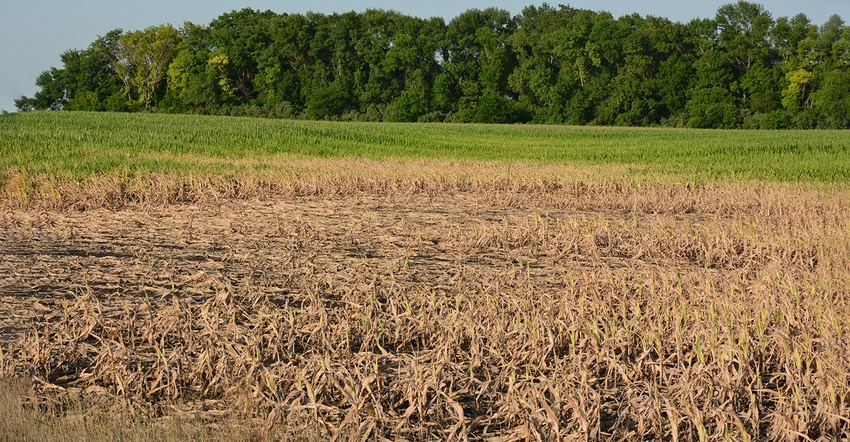August 6, 2018

This past year was wet, leading to ponding and flooding in fields across Minnesota. It’s left many growers wondering how their soil phosphorus and potassium will look going into the 2019 growing season.
While mobile nutrients like nitrogen and sulfur can be lost to volatilization in wet conditions, immobile nutrients like phosphorus, potassium and zinc are not impacted. Nutrient removal for P and K is largely driven by yield and rate of application.
What the research says
Research funded by the Minnesota Agricultural Fertilizer Research and Education Council and the Minnesota Soybean Research and Promotion Council shows that in a two-year corn-soybean rotation, timing of P or K application doesn't matter. The rate is what clearly dictates whether a crop will reach maximum yield.
The only exception is for high-pH soils that are high in carbonates, where excess calcium can reduce the availability of phosphorus. Here, an annual application of P may be warranted.
Soil moisture can affect K availability, making it more or less available depending on the types of clay in the soil. It is not always easy to predict what will happen in specific soils to K availability.
“We’ve seen through our research that the maximum efficiency of P or K fertilizer is around one-third for the crop grown after application. Only one-third of the total P or K taken up can be attributed to the fertilizer applied prior to the crop being grown,” says Dan Kaiser, U-M Extension soil fertility specialist. “What is not used by the crop is generally used to replenish P or K from the soil taken up by the crop.”
Kaiser says research has also shown that maintaining high soil P and K tests won’t make a difference in maximum attainable yield, versus fertilizing a low-testing soil with the fertilizer it needs.
Other AFREC-funded projects have shown that application of the exact amount of P or K removed by the crop leads to a slow buildup of soil test over time. Application of P or K at around 60% crop removal has been sufficient to hold soil test levels and achieve maximum productivity.
Managing P and K
In years with adverse growing conditions, how do you accurately track P and K availability? Kaiser says the best tool is conducting routine 0- to 6-inch soil samples.
“Reactions in the soil can change the availability of P or K, such that it is difficult to predict what will happen to P or K once it is added to the soil. People talk about banking P and K in the soil, but P and K can move between readily, moderately and slowly available forms — so not all nutrients applied will be taken up by plants immediately after application,” he says.
Drowned-out areas of the field, if they are small, may not warrant separate consideration. Be careful when taking soil samples in those areas. Fertilizer may be there that wasn’t used by the plant yet contributes to a high P or K soil test, overestimating availability for areas where crops grew normally.
U-M does not recommend a strict removal-based P and K application, though some growers are using this strategy. Kaiser suggests evaluating applications for the next year. If using a long-term average, don’t ignore low-yielding years. You can also use grid sampling to determine if poor-yielding areas of the field have enough P or K to consider a reduction in application rates next time fertilizer is applied.
Research included in this article was funded by AFREC. For the latest on fertilizer and nutrient management, follow U-M on Twitter @UMNNutrientMgmt.
Source: University of Minnesota
You May Also Like




